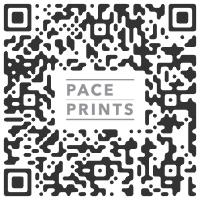PACE PRINTS,NEW YORK NY , U.S.A. - Robert Mangold : printed works from 1993-2017 - February 14 > March 15, 2025 @paceprints
printed works from 1993-2017
Robert Mangold
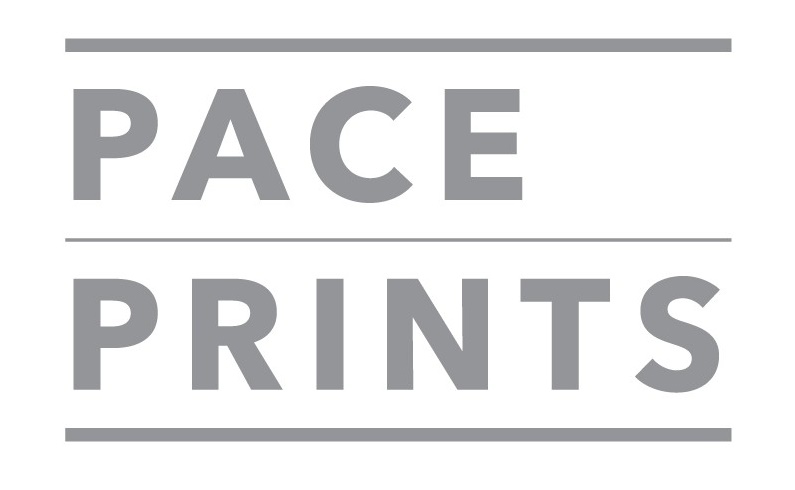
PACE PRINTS
536 W 22nd St, New York, NY 10011, USATel 212 629 6100 Fax 212 629 6113 e-mail:
OVERVIEW :
Pace Prints has been a leading publisher and gallery of original fine art prints, monoprints and multiples since 1968. In the Pace Editions and Pace Paper studios, Pace Prints offers artists the expertise, facilities and resources to create boundary-breaking original work in a broad range of printmaking techniques, from the traditional to cutting-edge, innovative and hybrid approaches. Pace Prints' gallery, now located at 536 West 22nd Street in Chelsea, is a premier exhibition space dedicated to fostering education and connoisseurship about prints to art lovers and collectors. Pace Prints is a member of the Art Dealers Association of America (ADAA) and the International Fine Print Dealers Association (IFPDA).
February 14 > March 15, 2025 @paceprints



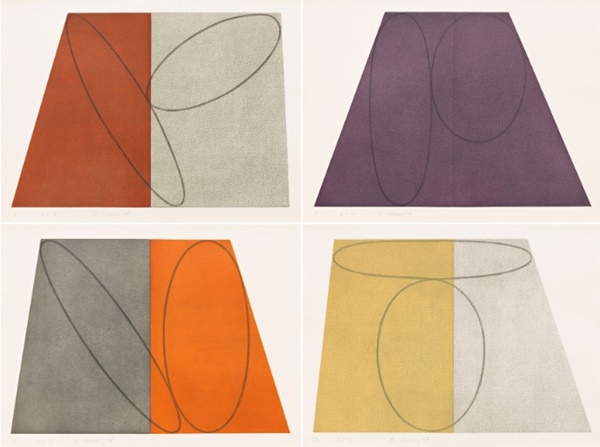
Plane/Figure Series, Folded I, II, III, IV (1993) Set of four soft-ground and aquatint etchings 22 1/2 x 30 inches, each Edition of 60
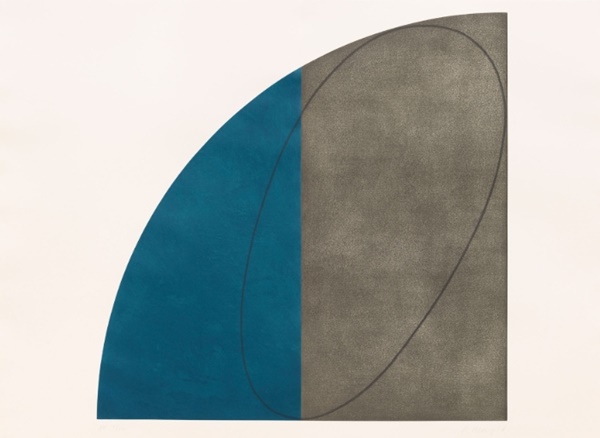

Curved Plane/Figure I (1994) Etching, soft-ground and aquatint on two sheets 42 3/4 x 58 inches Edition of 50
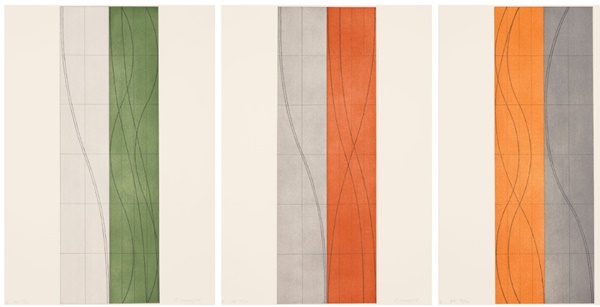

Double Column A, B, & C (2006) Set of three soft-ground and aquatint etchings 30 1/4 x 21 1/2 inches, each Edition of 40
ABOUT EXHIBITION : printed works from 1993-2017
Pace Prints is pleased to announce an exhibition of prints by Robert Mangold, on view from February 14–March 15, 2025, at 536 West 22nd Street. An opening reception will be held at the gallery on Thursday, February 13 from 6-8pm.
A major figure of Minimalism since the 1960s, Mangold has approached printmaking as an integral part of his artmaking practice.
Robert Mangold compiles a breadth of the artist’s printed works from 1993-2017 and highlights the artist’s engagement with printmaking as a dynamic venue to explore the fundamental elements of composition: color, shape, and line.
Extending his work beyond the studio and into the workshop, Mangold has often remarked that the collaborative nature of the printmaking process allows for a unique opportunity to exercise and realize visual ideas—which begin as drawings and develop into prints and paintings sometimes simultaneously.
Of the themes showcased in this exhibition, the insertion of a curved or counterpointed line within a rectilinear shape or circular frame repeats across many of the prints.
“I realized that the grid gave a structure to these curved lines and reassured the viewer as to what they were seeing because it gives them a framework.” - Robert Mangold
Etchings like Double Column A, B, & C or Untitled (Ring Image A, B, & C) exemplify this maneuver, which leaves the space created within and around each geometric configuration on the cusp between one shape and another. These seemingly incomplete designs allow the viewer to imagine the forms extending beyond themselves, creating the sense of a potentially infinite or expanding form.
References to Architecture are also present. The large-scale aquatint etchings, Tall Column A and Tall Column B, showcase Mangold’s work at its most mathematical and structural, recalling the aesthetics of a blueprint or floor plan, while also looking up to the great columns of antiquity and Gothic Cathedrals.
ABOUT EXHIBITION : printed works from 1993-2017
Pace Prints is pleased to announce an exhibition of prints by Robert Mangold, on view from February 14–March 15, 2025, at 536 West 22nd Street. An opening reception will be held at the gallery on Thursday, February 13 from 6-8pm.
A major figure of Minimalism since the 1960s, Mangold has approached printmaking as an integral part of his artmaking practice.
Robert Mangold compiles a breadth of the artist’s printed works from 1993-2017 and highlights the artist’s engagement with printmaking as a dynamic venue to explore the fundamental elements of composition: color, shape, and line.
Extending his work beyond the studio and into the workshop, Mangold has often remarked that the collaborative nature of the printmaking process allows for a unique opportunity to exercise and realize visual ideas—which begin as drawings and develop into prints and paintings sometimes simultaneously.
Of the themes showcased in this exhibition, the insertion of a curved or counterpointed line within a rectilinear shape or circular frame repeats across many of the prints.
“I realized that the grid gave a structure to these curved lines and reassured the viewer as to what they were seeing because it gives them a framework.” - Robert Mangold
Etchings like Double Column A, B, & C or Untitled (Ring Image A, B, & C) exemplify this maneuver, which leaves the space created within and around each geometric configuration on the cusp between one shape and another. These seemingly incomplete designs allow the viewer to imagine the forms extending beyond themselves, creating the sense of a potentially infinite or expanding form.
References to Architecture are also present. The large-scale aquatint etchings, Tall Column A and Tall Column B, showcase Mangold’s work at its most mathematical and structural, recalling the aesthetics of a blueprint or floor plan, while also looking up to the great columns of antiquity and Gothic Cathedrals.
ABOUT ARTISTS : Robert Mangold
Mangold was born in North Tonawanda, New York in 1937. He first trained at the Cleveland Institute of Art and then at Yale University, receiving his MFA in 1963. “Robert Mangold’s paintings,” wrote Michael Kimmelman in the New York Times in 1997, “are more complicated to describe than they seem, which is partly what’s good about them: the way they invite intense scrutiny, which, in the nature of good art, is its own reward.” Since the 1960s, Mangold has developed an artistic vocabulary derived from geometry and asymmetry in shape and form. Mangold’s use of line and subtle color reference Minimalism as well as Ancient Greek pottery and Renaissance frescoes. Mangold made his first prints in 1972 at Crown Point Press and has made prints throughout his career, working with Pace Editions and Brooke Alexander Editions. In 1967, he won a National Endowment for the Arts grant and in 1969, a Guggenheim Fellowship. In 1971, he had his first solo museum exhibition at the Guggenheim Museum. Major museum exhibitions of his work have since been held the Museum of Contemporary Art, San Diego (1974), the Stedelijk Museum in Amsterdam (1982), Hallen für Neue Kunst in Schaffhausen (1993), and Musée d’Orsay in Paris (2006). He has been featured in the Whitney Biennial four times, in 1979, 1983, 1985, and 2004.
Robert Mangold’s work investigates approaches to composition in addition to the relationship between an image and its background. In Mangold’s print work he contrasts bold geometric shapes with hand-drawn lines on muted planes of color. Mangold’s work has received international acclaim and is featured in public collections including the Guggenheim, the Art Institute of Chicago, MoMA, and the Tate Gallery, London.
Born in North Tonawanda, New York in 1937, Robert Mangold studied at the Cleveland Art Institute from 1956 to 1959. After receiving a fellowship to study at the Yale Summer School of Music and Art in Norfolk, Connecticut, he transferred to Yale University, where he received his B.F.A. in 1961 and M.F.A. in 1963. There, he experimented with a variety of stylistic idioms. His classmates included Nancy Graves, Brice Marden, and Richard Serra. He married fellow art student Sylvia Plimack in 1961, and they moved to New York upon the completion of his MFA in 1962. In New York during the early sixties, Mangold worked as a guard at the Museum of Modern Art with colleagues Sol LeWitt, Robert Ryman, Dan Flavin, and Lucy Lippard. Together these artists shared ideas that developed into minimalist theories.
 Robert Mangold
Robert Mangold 
Mangold was born in North Tonawanda, New York in 1937. He first trained at the Cleveland Institute of Art and then at Yale University, receiving his MFA in 1963. “Robert Mangold’s paintings,” wrote Michael Kimmelman in the New York Times in 1997, “are more complicated to describe than they seem, which is partly what’s good about them: the way they invite intense scrutiny, which, in the nature of good art, is its own reward.” Since the 1960s, Mangold has developed an artistic vocabulary derived from geometry and asymmetry in shape and form. Mangold’s use of line and subtle color reference Minimalism as well as Ancient Greek pottery and Renaissance frescoes. Mangold made his first prints in 1972 at Crown Point Press and has made prints throughout his career, working with Pace Editions and Brooke Alexander Editions. In 1967, he won a National Endowment for the Arts grant and in 1969, a Guggenheim Fellowship. In 1971, he had his first solo museum exhibition at the Guggenheim Museum. Major museum exhibitions of his work have since been held the Museum of Contemporary Art, San Diego (1974), the Stedelijk Museum in Amsterdam (1982), Hallen für Neue Kunst in Schaffhausen (1993), and Musée d’Orsay in Paris (2006). He has been featured in the Whitney Biennial four times, in 1979, 1983, 1985, and 2004.
Robert Mangold’s work investigates approaches to composition in addition to the relationship between an image and its background. In Mangold’s print work he contrasts bold geometric shapes with hand-drawn lines on muted planes of color. Mangold’s work has received international acclaim and is featured in public collections including the Guggenheim, the Art Institute of Chicago, MoMA, and the Tate Gallery, London.
Born in North Tonawanda, New York in 1937, Robert Mangold studied at the Cleveland Art Institute from 1956 to 1959. After receiving a fellowship to study at the Yale Summer School of Music and Art in Norfolk, Connecticut, he transferred to Yale University, where he received his B.F.A. in 1961 and M.F.A. in 1963. There, he experimented with a variety of stylistic idioms. His classmates included Nancy Graves, Brice Marden, and Richard Serra. He married fellow art student Sylvia Plimack in 1961, and they moved to New York upon the completion of his MFA in 1962. In New York during the early sixties, Mangold worked as a guard at the Museum of Modern Art with colleagues Sol LeWitt, Robert Ryman, Dan Flavin, and Lucy Lippard. Together these artists shared ideas that developed into minimalist theories.
 Robert Mangold
Robert Mangold Artist's site : https://robertmangoldprints.com/
mail : not available Artist's CITY :NEW YORK NY
Artist's COUNTRY :U.S.A.
Gallery Opening Hours : Tuesday-Saturday: 10-6
mpefm U.S.A. art press release
QR of this press release
in your smartphone, tablet
